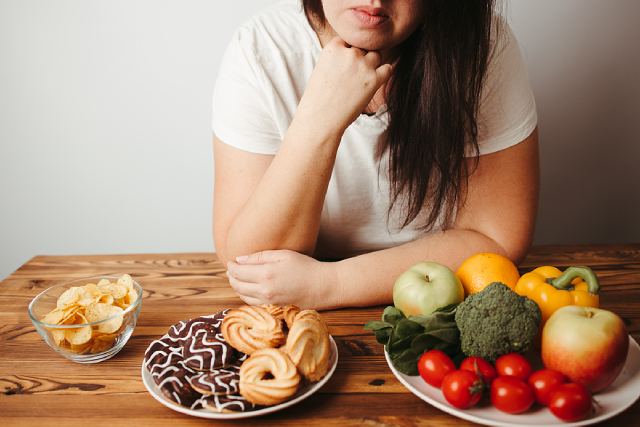Food Cravings: What Your Hunger is Trying to Tell You
Have you ever found yourself grappling with an irresistible urge for a particular type of food? Believe it or not, your body might be signalling a nutritional deficiency. These cravings, diverse in nature, exert both physical and mental impacts. Deciphering the messages behind your cravings opens the door to healthier alternatives, facilitating your weight loss journey while keeping your appetite in check.
Sugary Sweets
Got a hankering for something sweet that just won’t quit? Your body might be dropping a hint that it’s running on empty and needs an energy pick-me-up. We’ve all been there—fighting off the urge to nap and reaching for sugary treats to stay awake.
While those sweet goodies give us a quick energy boost, let’s face it, too much of a good thing can pack on the pounds and bring some unwelcome health baggage. Instead, why not swap it out for something that’ll give you a lift without the guilt trip?
Consider natural energy boosters like bananas, avocados, apples, and berries. Packed with vitamins, fibre, and antioxidants, these fresh fruits provide sustained energy without the downsides. Alternatively, opt for low-calorie whole grains or nuts to satisfy your sweet tooth guilt-free.
Fatty Food
Don’t completely cut out fatty food from your diet. Instead, substitute the unhealthy with healthy fat foods! Eliminating fatty foods entirely might actually fuel your cravings for them. Over time, the absence of these foods can intensify your desire for them. Instead of going cold turkey, consider embracing healthy fats to balance your cravings.
Avocados are a fantastic choice, offering your body a dose of healthy fats, vitamins, and minerals. These versatile fruits can be enjoyed on their own or transformed into a refreshing drink. Whether you add them to a salad or whip up some delicious avocado toast, it’s a tasty way to satisfy your cravings while treating your body right.
Salty Snacks
Did you know that there is a relationship between our sodium intake and our body’s hydration level? A craving for salty snacks is a sign of dehydration or electrolyte imbalance in the body.
Typically, our bodies yearn for sodium-rich foods to maintain cellular fluid balance and stave off dehydration. However, it’s a delicate balance, as excessive sodium intake can hike up blood pressure, upping the risk of heart issues.
Instead of reaching for store-bought snacks, why not whip up your own crunchy, salty, flavourful delight at home? Not only can you tailor it to suit your taste buds, but you’ll also have the satisfaction of creating a healthier version.
Carbohydrates
Don’t ignore your carb cravings— there’s often more to them than meets the eye! One major trigger for carb yearnings is potential undereating. Our bodies rely on carbohydrates for fuel and proper functioning, so when we fall short, fatigue sets in, intensifying those cravings.
Another reason could be that you are feeling stressed, anxious, or depressed. Carbohydrates assist in taming stress hormones and trigger serotonin production, offering a brain-relaxing effect that fosters emotional balance. This not only helps fend off depression but also brings a sense of calm.
As carbs are an essential component of our diet, it’s important to strike a balance, considering their role in both nutrition and potential weight gain. Opting for low-carb alternatives, such as cauliflower rice, sweet potatoes, or kale crisps, provides a healthier avenue to satiate your cravings.
Conclusion
Curb your cravings by understanding what your body needs. Contrary to popular belief, food cravings aren’t bad; instead, they serve as valuable cues to better understand yourself and your body. This way, you can provide the nutrients it needs while sticking to a healthy diet during your weight loss journey. Start your healthy eating by adopting a sustainable meal plan today!
Embark on a transformative weight loss journey with Slim Couture’s Traditional Chinese Medicine (TCM) treatment. Tailored to address weight gain and target stubborn fats, our TCM weight loss program offers a holistic approach to wellness. Visit our website for more information on our weight loss treatments, or contact us today to schedule a personalised consultation!







